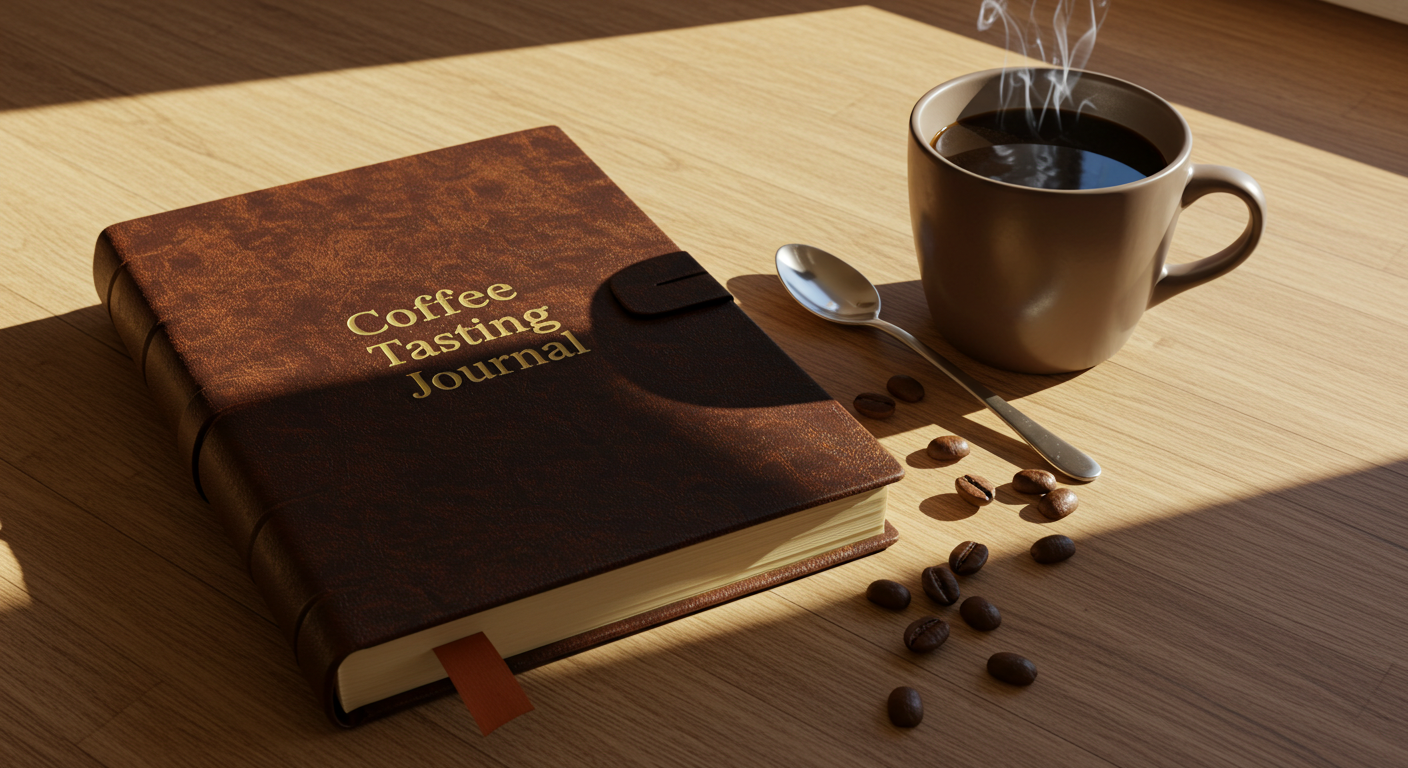If you love coffee and want to better understand what you’re drinking, starting a coffee tasting journal is one of the best steps you can take. It helps you remember what you liked (or didn’t like), develop your palate, and even sound like a pro when talking about coffee.
Whether you’re a beginner or an aspiring coffee connoisseur, a tasting journal can elevate your experience and sharpen your senses. In this guide, we’ll show you how to start one, what to include, and how to train your taste buds.
Why Keep a Coffee Tasting Journal?
A coffee journal is like a flavor memory bank. Here’s why it’s worth starting:
- Track what you like: Not all beans or brews are created equal. Knowing what suits your taste makes future purchases easier.
- Develop your palate: Writing down flavor notes helps you identify nuances you might miss otherwise.
- Discover patterns: Maybe you prefer African beans over South American, or light roasts over dark — a journal helps you notice.
- Improve brewing: Noting your process (grind size, water temp, etc.) helps you tweak for better results.
- It’s fun and mindful: Sipping coffee becomes an intentional, sensory experience.
What You Need to Get Started
You don’t need a fancy notebook — just a place to consistently write or type your observations. Here’s what you can use:
- A blank notebook (lined or unlined)
- Printable templates (many free ones available online)
- A digital notes app or spreadsheet
- Coffee-specific journals (available for purchase with prompts and categories)
Consistency is key, so choose a format you’ll actually use.
What to Include in Your Coffee Journal
You can customize your journal, but these are the most common (and useful) sections to include:
1. Coffee Details
- Coffee name / brand
- Roaster
- Country of origin
- Region or farm (if known)
- Processing method (washed, natural, honey, etc.)
- Roast level (light, medium, dark)
- Roast date
2. Brewing Info
- Brewing method (e.g., pour-over, French press, AeroPress, espresso)
- Grind size
- Coffee-to-water ratio
- Water temperature
- Brew time
These technical details help you replicate or improve a brew in the future.
3. Tasting Notes
Use your senses!
- Aroma: What does the coffee smell like before and after brewing?
- Flavor: What do you taste? Chocolate, citrus, floral, nutty, earthy?
- Acidity: Is it bright, soft, tangy, sharp?
- Body: How does it feel in your mouth? Light, syrupy, creamy?
- Aftertaste: What flavors linger after you swallow?
4. Rating / Score
Give it a personal rating (e.g., out of 5 or 10). You can also use emojis or color codes if that feels more fun.
5. Mood or Environment
Where were you drinking it? How did it make you feel? Was it a morning pick-me-up or a calm afternoon break?
This adds a personal and emotional layer to your notes.
How to Train Your Palate for Better Tasting
Don’t worry if your first few notes feel vague. Like any skill, coffee tasting improves with practice. Here are a few ways to sharpen your senses:
Use a Coffee Flavor Wheel
The Specialty Coffee Association (SCA) flavor wheel is a fantastic visual guide that breaks down coffee flavors into specific categories like fruity, spicy, nutty, and more.
Taste Side-by-Side
Brew two different coffees and compare them directly. This makes differences more obvious and easier to detect.
Practice Describing Everyday Flavors
When you eat or drink anything — fruit, chocolate, herbs — try to describe what you taste. This strengthens your flavor vocabulary.
Smell First
Your nose plays a huge role in flavor. Inhale the aroma deeply before taking your first sip. Close your eyes if it helps.
Taste Slowly
Let the coffee cool slightly — extreme heat masks flavors. Sip slowly and pay attention to how it changes from start to finish.
Sample Journal Entry (For Inspiration)
Coffee Name: Ethiopia Yirgacheffe
Roaster: Onyx Coffee Lab
Origin: Ethiopia
Processing: Washed
Roast: Light
Method: V60 Pour-over
Grind: Medium-fine
Ratio: 15g coffee to 240ml water
Temp: 94°C (201°F)
Time: 2:45 minutes
Aroma: Floral, citrus
Flavor: Lemon zest, jasmine, honey
Acidity: Bright and lively
Body: Silky and light
Aftertaste: Clean, with hints of sweet herbs
Score: 9/10
Mood: Calm Sunday morning, perfect for slow sipping
Tools to Help You Get Started
- Coffee flavor wheels and maps
- Aromatics kits (to practice identifying smells)
- Professional cupping forms (if you want a more structured approach)
- Apps like “Beanconqueror” or “Tasting Grounds” for digital journaling
Final Thoughts: Make Every Cup a Learning Experience
A coffee journal helps turn a simple habit into a flavorful journey. With each entry, you’ll learn more about what you like, what works best for your brewing method, and how to identify the subtle notes hiding in your favorite beans.
You don’t need to be a barista or coffee expert to enjoy tasting coffee like a pro — all it takes is curiosity, a little structure, and a willingness to slow down and savor.
So grab your favorite mug, make a fresh brew, and start writing. Your taste buds will thank you.


